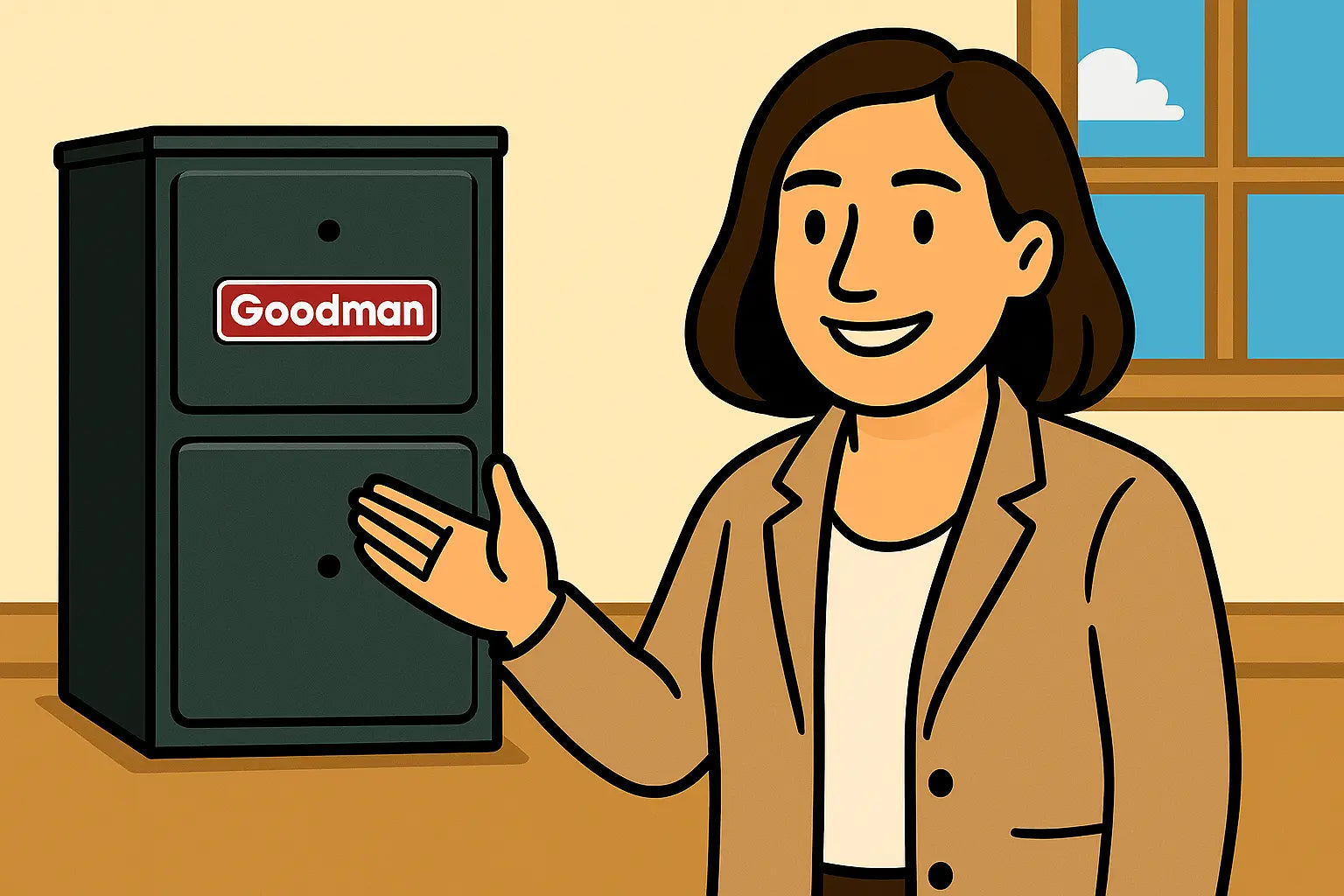The Importance of Knowing When to Call for Help
Your furnace is the heart of your home’s comfort system, and the Goodman GR9S960803BN is designed to be durable and efficient. But like any appliance, it can encounter problems over time. While it’s great to handle simple checks on your own—such as adjusting the thermostat or changing filters—there are times when a professional HVAC technician is the safest and most cost-effective choice.
Let’s explore the most common troubleshooting scenarios and break down whether you can handle them yourself or whether a pro should step in.
1. Furnace Won’t Turn On
DIY Check:
-
Make sure the thermostat is set to “heat” and that the temperature is set higher than the current room temperature.
-
Check the circuit breaker or fuse box to ensure power is reaching the furnace.
-
Inspect the furnace switch (often located on the side of the unit) to confirm it’s in the “on” position.
Call a Pro If:
If these basic steps don’t resolve the issue, the problem could involve the ignition system, control board, or gas valve. These are not safe DIY repairs.
2. Weak or Uneven Heating
DIY Check:
-
Replace or clean the furnace air filter, as a clogged filter restricts airflow.
-
Make sure all supply and return vents are open and not blocked by furniture or rugs.
Call a Pro If:
If weak airflow continues after filter replacement, it could indicate a problem with the blower motor or ductwork leaks. Both require professional diagnosis.
For more detail on maintaining indoor air quality, the EPA’s guide to air cleaners provides useful insights.
3. Strange Noises
DIY Check:
-
A soft hum or gentle whoosh is normal.
-
Loud rattling could mean a loose panel—tighten screws to stop the vibration.
Call a Pro If:
Persistent banging, screeching, or grinding noises usually point to issues with the blower motor, burners, or other moving parts. A qualified HVAC technician should investigate before damage worsens.
4. Furnace Short Cycling (Turning On and Off Frequently)
DIY Check:
-
Replace the air filter if dirty.
-
Check thermostat settings—sometimes a thermostat placed near a drafty window or heat source can confuse the system.
Call a Pro If:
Frequent cycling could mean overheating due to airflow problems, or it may point to a malfunctioning flame sensor. These issues require professional service to prevent costly damage.
5. Gas Smells or Yellow Pilot Flame
DIY Check:
There is no safe DIY step here. If you smell gas or see a yellow or flickering pilot flame, turn off the furnace immediately and ventilate your home.
Call a Pro Immediately:
Contact your gas utility provider and an HVAC professional right away. Gas leaks and combustion problems are serious safety hazards. Learn more about the importance of gas safety from the CDC.
6. Rising Utility Bills Without Clear Cause
DIY Check:
-
Replace the filter.
-
Check for drafts in your home that might force the furnace to work harder.
-
Make sure your thermostat is programmed efficiently.
Call a Pro If:
If bills remain high, your system may be operating inefficiently due to dirty burners, worn parts, or duct leaks. A technician can inspect, clean, and calibrate the system for peak performance.
For long-term savings, the ENERGY STAR® guide to heating efficiency is an excellent resource.
Final Thoughts from Savvy Mavi
As a homeowner, it’s empowering to understand your furnace and take care of simple troubleshooting steps on your own. But when in doubt, it’s always safest—and often cheaper in the long run—to call in an expert.
If you’re considering upgrading or replacing your furnace, take a look at the Goodman GR9S960803BN Furnace for a reliable, high-efficiency option built to keep your home comfortable for years.
Need more installation and troubleshooting tips for this unit? Visit my guide right here!
Until next time,
- Savvy Mavi







